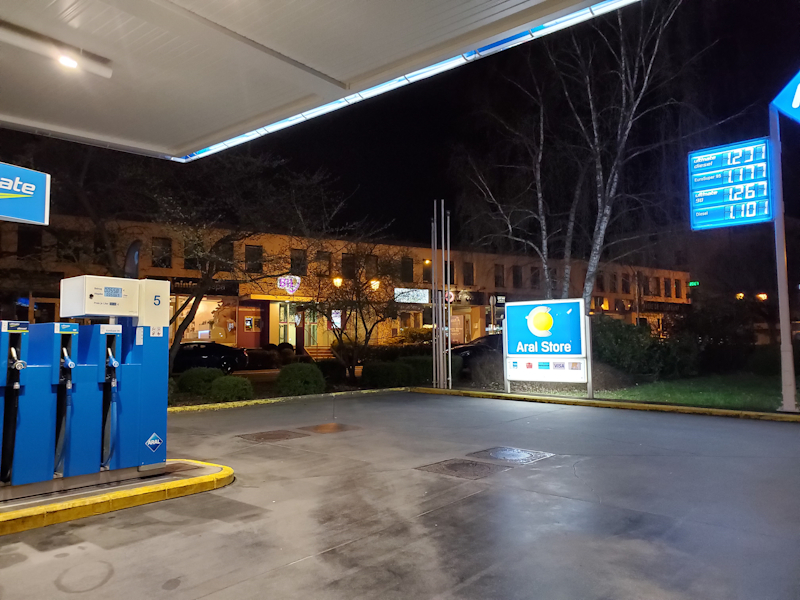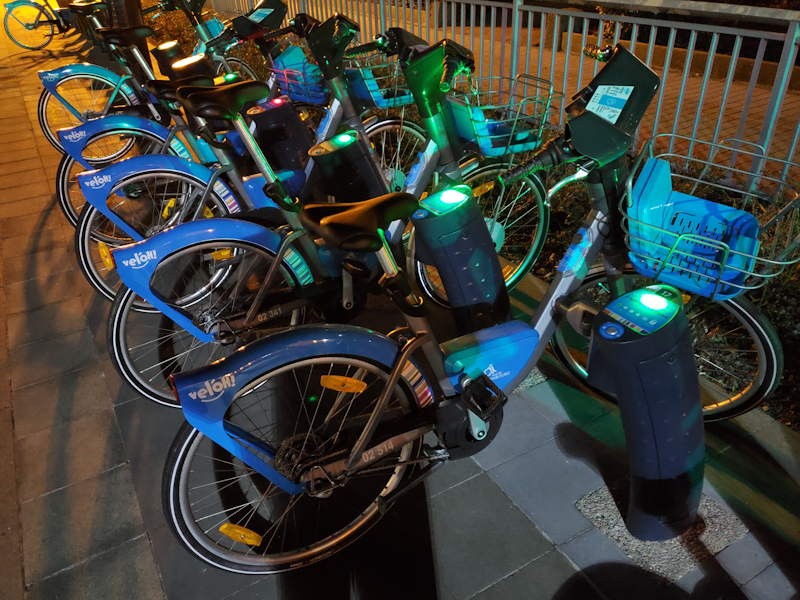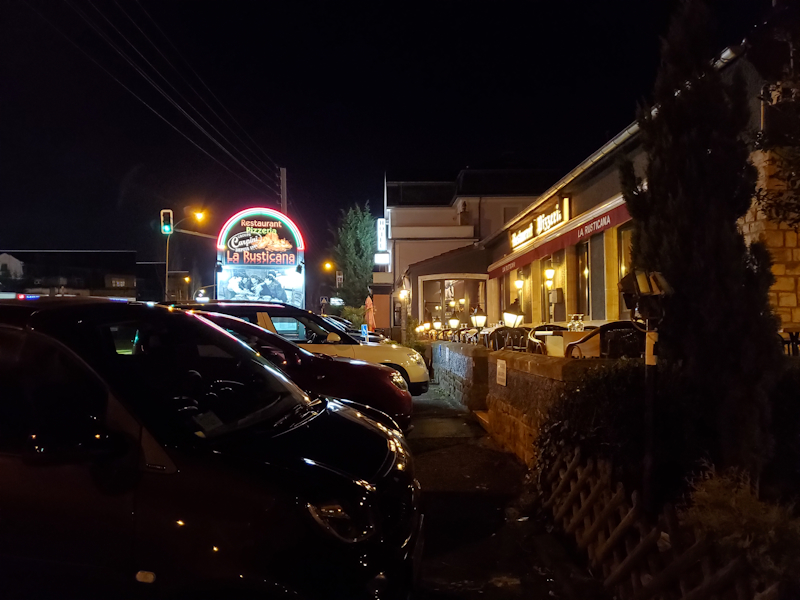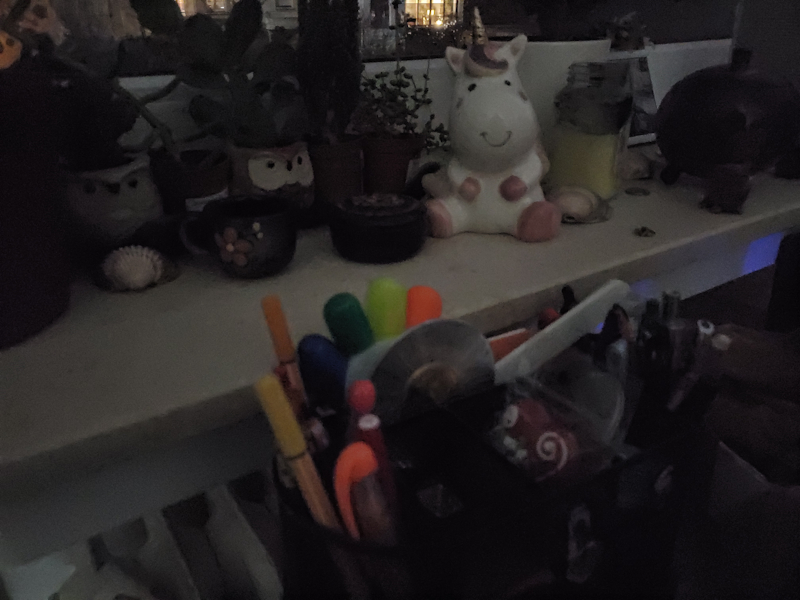The Samsung Galaxy S10+ Snapdragon & Exynos Review: Almost Perfect, Yet So Flawed
by Andrei Frumusanu on March 29, 2019 9:00 AM ESTCamera - Low Light Evaluation
Low-light capture improvements is something that Samsung has been very mum about for the Galaxy S10. Fundamentally on the hardware side of things nothing has really improved compared to the Galaxy S9/Note9. So in practise, any difference we would be seeing should be solely based on the processing improvements of the Galaxy S10.

[ Galaxy S10+ Snapdragon ] - [ Galaxy S10+ Exynos ]
[ Galaxy Note9 (E) ] - [ Galaxy S9+ (S) ] - [ Galaxy S8 ]
[ iPhone XS ] - [ iPhone X ] [ LG V40 ] - [ OnePlus 6T ]
[ Pixel 3 ] - [ View20 ] - [ Mate 20Pro ]
In the first shot, we’re seeing again very different results between the Snapdragon and Exynos, but in a twist compared to the daylight shots, this time around it’s an advantage on the side of the Exynos model. Here the latter models is able to bring out a lot more shadows in the scene and is significantly sharper than the Snapdragon variant. The Snapdragon does a bit better on the bright highlights of the signage, however I don’t think this was worth it as it gives up too much in other parts of the shot.
I feel as if the Snapdragon has quite a bit of sharpening going on, which makes very little sense to use in a scenario like this.
The Galaxy S10’s are both beat by the Mate 20 Pro’s large sensor which just has much better native dynamic range, retaining more texture details on the gas station floor and roof.
Using the wide-angle lens in such a scenario doesn’t result in very good picture. The Snapdragon achieves better dynamic range and able to show the signage correctly without overblowing it, however the Exynos beats it in terms of detail. Noise on the latter is a lore more coarse and pronounced which can result in some ugly regions on even surfaces.

[ Galaxy S10+ Snapdragon ] - [ Galaxy S10+ Exynos ]
[ Galaxy Note9 (E) ] - [ Galaxy S9+ (S) ] - [ Galaxy S8 ]
[ iPhone XS ] - [ iPhone X ] - [ LG V40 ] - [ OnePlus 6T ]
[ Pixel 3 ] - [ View20 ] - [ Mate 20Pro ]
Big advantages in sharpness on the bright parts of the picture for the Snapdragon with stronger contrast for this phone. The Exynos doesn’t do well on the bright parts, blurring them, but on the other hand it has better details in the shadows than the Snapdrgon, with overall less pronounced light noise.
In terms of light capture, the Mate 20 Pro is far ahead and Night Sight on the Pixel 3 also sweeps the floor with the competition.

[ Galaxy S10+ Snapdragon ] - [ Galaxy S10+ Exynos ]
[ Galaxy Note9 (E) ] - [ Galaxy S9+ (S) ] - [ Galaxy S8 ]
[ iPhone XS ] - [ iPhone X ] - [ LG V40 ] - [ OnePlus 6T ]
[ Pixel 3 ] - [ View20 ] - [ Mate 20Pro ]
The Snapdragon here is heavier processed with darker shadows and noise reduction, however this makes little sense in a low-light show and the Exynos is more natural with better shadow detail even if it has more natural sensor noise.
Although Samsung at least beats the newest iPhones, it’s no match for Huawei and the Pixel’s Night sight.

[ Galaxy S10+ Snapdragon ] - [ Galaxy S10+ Exynos ]
[ Galaxy Note9 (E) ] - [ Galaxy S9+ (S) ] - [ Galaxy S8 ]
[ iPhone XS ] - [ iPhone X ] - [ LG V40 ] - [ OnePlus 6T ]
[ Pixel 3 ] - [ View20 ] - [ Mate 20Pro ]

[ Galaxy S10+ Snapdragon ] - [ Galaxy S10+ Exynos ]
[ Galaxy Note9 (E) ] - [ Galaxy S9+ (S) ] - [ Galaxy S8 ]
[ iPhone XS ] - [ iPhone X ] - [ LG V40 ] - [ OnePlus 6T ]
[ Pixel 3 ] - [ View20 ] - [ Mate 20Pro ]
In the last generic low light shot we see the Snapdragon again favour evening out highlights and sacrificing shadows. The Exynos does the opposite with more blown out highlights but with better shadow detail retention in the foreground.
On the wide angle, the Exynos produces a much more useable shot even though the noise is quite terrible.

[ Galaxy S10+ Snapdragon ] - [ Galaxy S10+ Exynos ]
[ Galaxy Note9 (E) ] - [ Galaxy S9+ (S) ] - [ Galaxy S8 ]
[ iPhone XS ] - [ iPhone X ] - [ LG V40 ]
[ OnePlus 6T ] - [ Pixel 3 ]
[ View20 ] - [ Mate 20Pro ]
Going into extreme low light scenarios, we’re venturing into shots that usually in the past we didn’t expect phones to be able to capture.
This is the first scene in which Samsung’s new Bright Night mode triggers. The new extreme ultra low light mode functions similarly to Huawei’s Night mode or Google’s Night sight, although the results here aren’t quite the same. The result here heavily favour the Snapdragon chip as it’s able to produce much less noise. It’s not competing with Huawei or Google, however it is able to showcase a result that is much better than some other traditional shooters.

[ Galaxy S10+ Snapdragon ] - [ Galaxy S10+ Exynos ]
[ Galaxy Note9 (E) ] - [ Galaxy S9+ (S) ] - [ Galaxy S8 ]
[ iPhone XS ] - [ iPhone X ] - [ LG V40 ] - [ OnePlus 6T ]
[ Pixel 3 ] - [ View20 ] - [ Mate 20Pro ]
A second example of the new Bright Night mode, we again see that it does help the S10 over its auto mode and it lands the phone in third place after Huawei’s flagship and Google’s Night Sight.
Low-light Conclusion
Overall, the low-light capture ability of the Galaxy S10 isn’t very exciting. Fundamentally Samsung needed to innovate more in this regard and I would have wanted to see some more innovation to the likes of Huawei and Google.
Low-light is again a scenario where the Snapdragon and Exynos variants of the S10 differ quite a bit. The latter tends to produce more natural noise in most shots and retains more shadow detail, while the Snapdragon does better in brighter parts. Overall, I’d say it’s a toss-up between the two and it’ll depend on the given scene.










229 Comments
View All Comments
melgross - Saturday, March 30, 2019 - link
Nope. Not even close.Irish910 - Saturday, March 30, 2019 - link
Oh right.You must have watched a YouTube video or two where the note loads one or two web based apps quicker. But fails to keep the same apps open in memory after the start up test.
I’ll trust the spec benchmarks. Hell even geekbench scores and Antutu are much higher on the A12. You have no argument.
Tropicocity - Sunday, March 31, 2019 - link
All this is irrelevant when you take into account that to get the A12, you have ONE brand to go with, and an entirely different OS, with a very "You better buy EVERYTHING Apple or you're fucked" mentality. They literally lock you into their ecosystem and take away vast amounts of consumer freedom in terms of customization, and iTunes is still the worst piece of software on any phonecha0z_ - Tuesday, April 9, 2019 - link
I wish A12 was a SOC sold to other companies... ;(Thraxen - Sunday, March 31, 2019 - link
LOL... it’s funny you mention dumping apps from memory when that’s what iOS is notorious for doing since all Apple devices are crippled by anemic RAM.cha0z_ - Tuesday, April 9, 2019 - link
You saw apple approach of fluidity and "user experience" above all. They aim towards animations, smoothness instead of choppy or no animation app loading. I suspect also that their loading is mainly after the animation finished and yes - the A12 is so fast that it can pull it off. In raw spec and speed the A12 is better in CPU/GPU vs sd855, simple as that. How it's utilised is different story. Some prefer the faster apps opening, others smooth and consistently doing so - UI. It's really nice to see how my iphone 6s is far smoother and "joyful" to use vs my exynos note 9 packed with features.hansmuff - Friday, March 29, 2019 - link
I do like the direction Samsung is going regarding battery and camera. I'm much looking forward to the S11, the S10 isn't worth upgrading to from a S9+ IMO.Thraxen - Friday, March 29, 2019 - link
I’d argue it rarely makes sense to upgrade between single generations for virtually any phone.StevoLincolnite - Friday, March 29, 2019 - link
Yeah. I have always waited a couple generations before I upgraded.I had to regress to my old trusty Note 5 for the time being though, broketh my Note 8... And figure I will just wait it out for the Note 10 and buy it outright in a few months.
Hate how phones are made from fragile glass and can't even survive a half foot drop. I really do.
catavalon21 - Thursday, August 22, 2019 - link
THAT. My son's S10, in an Otter Box case, fell and hit screen-first on something. The screen cracked. The built-in screen cover, which essentially prevents installing a good, effective, strong screen cover, is awful.